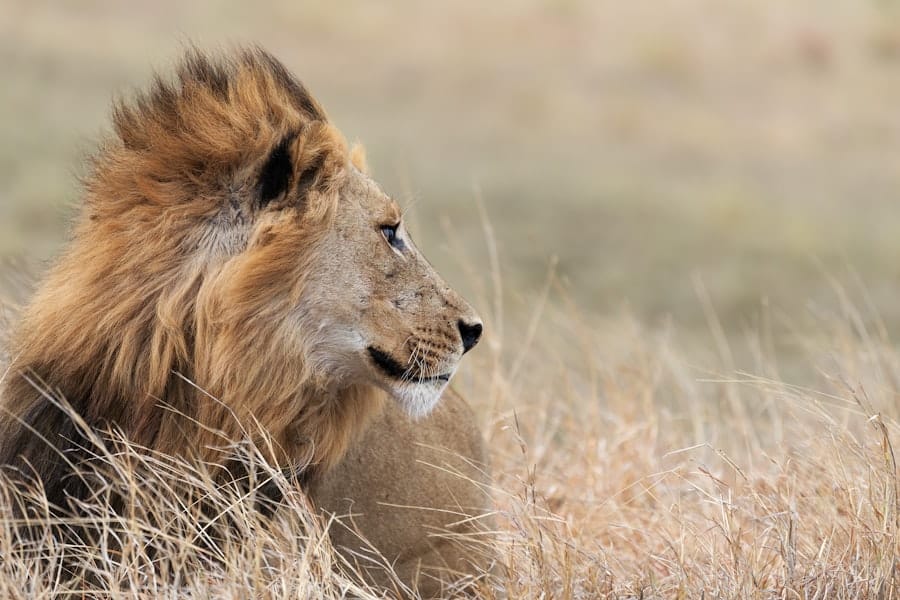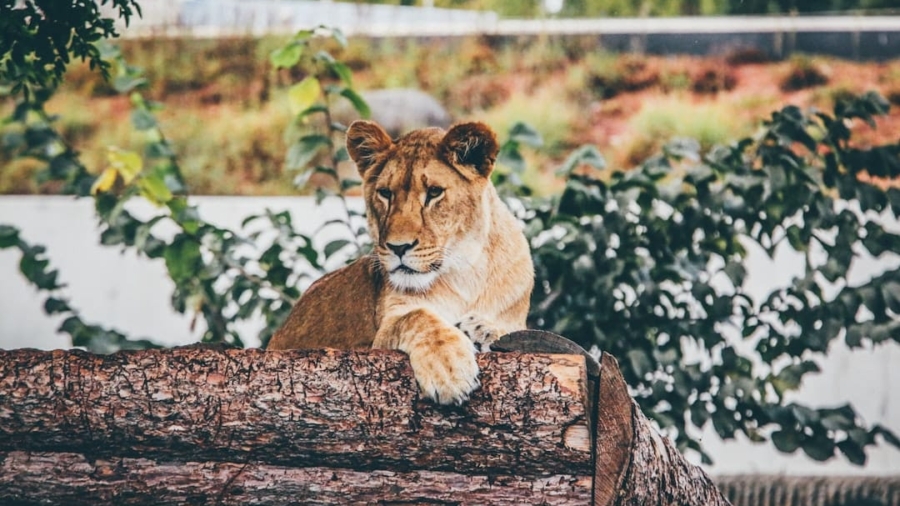Blockchain technology, often heralded as a revolutionary advancement in the digital landscape, is fundamentally a decentralized ledger system that records transactions across multiple computers in such a way that the registered transactions cannot be altered retroactively. This technology was initially developed to support cryptocurrencies like Bitcoin, but its potential applications extend far beyond financial transactions. The core attributes of blockchain—transparency, security, and immutability—make it an attractive solution for various sectors, including supply chain management, healthcare, and notably, wildlife conservation.
At its essence, blockchain operates on a network of nodes that validate and record transactions in blocks. Each block is linked to the previous one, forming a chain that is visible to all participants in the network. This decentralized nature eliminates the need for a central authority, thereby reducing the risk of fraud and corruption.
In the context of wildlife conservation, these characteristics can be harnessed to create more effective systems for tracking endangered species, monitoring poaching activities, and ensuring that conservation funds are used appropriately. As the world grapples with the escalating crisis of biodiversity loss and environmental degradation, the integration of blockchain technology into conservation efforts presents a promising avenue for enhancing accountability and efficiency.
Key Takeaways
- Blockchain technology is a decentralized and secure way of recording transactions and data, making it tamper-proof and transparent.
- Current challenges in wildlife conservation include poaching, habitat destruction, and lack of transparency in supply chains.
- Blockchain can address conservation challenges by providing transparent and immutable records of transactions, enabling better tracking of wildlife products and funding, and facilitating secure and efficient donations.
- Case studies of successful blockchain implementation in conservation include the use of blockchain to track tuna from ocean to table and to verify the authenticity of sustainably sourced diamonds.
- Potential applications of blockchain in wildlife conservation include tracking and verifying the origin of wildlife products, creating transparent donation platforms, and enabling secure and efficient supply chain management.
- Advantages of using blockchain in conservation efforts include increased transparency, reduced fraud and corruption, and improved traceability, while limitations include technological barriers and potential privacy concerns.
- Regulatory and ethical considerations for implementing blockchain in conservation include data privacy, regulatory compliance, and ensuring the inclusion of local communities in decision-making processes.
- The future outlook for blockchain technology in wildlife conservation is promising, with potential for increased transparency, efficiency, and trust in conservation efforts.
Current Challenges in Wildlife Conservation
Threats from Poaching and Illegal Wildlife Trade
One of the most pressing issues is poaching, which has reached alarming levels in many regions. The illegal wildlife trade generates billions of dollars annually, driven by demand for exotic pets, traditional medicine, and luxury goods made from animal parts. This illicit activity not only threatens individual species but also disrupts entire ecosystems, leading to long-term ecological consequences.
Habitat Destruction and Fragmentation
Another significant challenge is habitat destruction, often fueled by human activities such as deforestation, urbanization, and agriculture. As natural habitats are encroached upon or destroyed, wildlife populations are forced into smaller areas, leading to increased competition for resources and heightened vulnerability to extinction.
Climate Change and Data Limitations
Additionally, climate change exacerbates these issues by altering habitats and migration patterns, further complicating conservation efforts. The lack of reliable data on wildlife populations and movements also hampers effective management strategies, making it difficult for conservationists to implement timely interventions.
How Blockchain Can Address Conservation Challenges

Blockchain technology offers innovative solutions to some of the most critical challenges facing wildlife conservation today. By providing a transparent and immutable record of transactions and data, blockchain can enhance accountability in conservation initiatives. For instance, it can be used to track the movement of wildlife products through supply chains, ensuring that only legally sourced materials are sold.
This traceability can deter poachers and illegal traders by making it more difficult for them to profit from their activities. Moreover, blockchain can facilitate better data collection and sharing among conservation organizations, governments, and local communities. By creating a decentralized platform where stakeholders can input and access real-time data on wildlife populations and habitat conditions, decision-makers can make more informed choices regarding conservation strategies.
This collaborative approach not only improves the effectiveness of conservation efforts but also fosters trust among stakeholders, as all parties can verify the information being shared.
Case Studies of Successful Blockchain Implementation in Conservation
Several organizations have already begun to explore the potential of blockchain technology in wildlife conservation with promising results. One notable example is the partnership between the World Wildlife Fund (WWF) and Everledger, a blockchain-based platform designed to track the provenance of diamonds and other luxury goods. In this collaboration, WWF aims to apply similar principles to monitor the supply chains of wildlife products.
By using blockchain to trace the origin of products like ivory or rhino horn, they can help ensure that these items are not sourced from poached animals. Another compelling case study is the use of blockchain by the organization Conservation X Labs in their initiative called “Wildlife Trafficking.” This project leverages blockchain technology to create a secure database that tracks wildlife trafficking incidents globally. By aggregating data from various sources—such as law enforcement agencies, NGOs, and local communities—this platform provides a comprehensive view of trafficking patterns.
The transparency afforded by blockchain allows stakeholders to identify hotspots for poaching and trafficking, enabling targeted interventions.
Potential Applications of Blockchain in Wildlife Conservation
The potential applications of blockchain technology in wildlife conservation are vast and varied. One significant area is the creation of digital identities for endangered species. By assigning unique identifiers to individual animals or populations within a blockchain framework, researchers can monitor their movements and health over time.
This data can be invaluable for understanding migration patterns and breeding behaviors, ultimately informing conservation strategies. Additionally, blockchain can facilitate community-based conservation efforts by enabling local communities to participate actively in monitoring wildlife populations. For example, community members could use mobile applications connected to a blockchain network to report sightings or poaching incidents.
This grassroots involvement not only empowers local populations but also enhances data accuracy by incorporating firsthand observations into conservation databases.
Advantages and Limitations of Using Blockchain in Conservation Efforts

While the advantages of using blockchain in wildlife conservation are compelling, there are also limitations that must be considered.
By creating an immutable record of transactions and data sharing, stakeholders can hold each other accountable for their actions.
This transparency can deter corruption and mismanagement of funds allocated for conservation efforts. However, implementing blockchain technology is not without its challenges. One limitation is the technological barrier that may exist in remote areas where many conservation efforts take place.
Access to reliable internet connectivity and digital literacy among local communities can hinder the effective use of blockchain solutions. Additionally, while blockchain can improve data integrity, it does not inherently solve issues related to data quality or accuracy; if incorrect information is entered into the system, it will remain immutable.
Regulatory and Ethical Considerations for Implementing Blockchain in Conservation
The implementation of blockchain technology in wildlife conservation raises several regulatory and ethical considerations that must be addressed to ensure its effectiveness and sustainability. One key concern is data privacy; while transparency is essential for accountability, it is equally important to protect sensitive information about endangered species and their habitats from potential exploitation or misuse. Striking a balance between transparency and privacy will require careful consideration of what data should be shared publicly versus what should remain confidential.
Furthermore, there are ethical implications related to the involvement of local communities in blockchain initiatives. It is crucial that these communities are not only consulted but actively engaged in decision-making processes regarding how blockchain technology is implemented in their regions.
Future Outlook for Blockchain Technology in Wildlife Conservation
The future outlook for blockchain technology in wildlife conservation appears promising as more organizations recognize its potential to address longstanding challenges within the field. As awareness grows about the benefits of transparency and accountability provided by blockchain systems, we may see an increase in collaborative efforts among governments, NGOs, and private sector entities aimed at leveraging this technology for conservation purposes. Moreover, advancements in technology may help overcome some of the current limitations associated with blockchain implementation in remote areas.
Innovations such as satellite internet access or mobile-based solutions could enhance connectivity for communities involved in conservation efforts. As these technologies evolve, they may facilitate broader adoption of blockchain solutions across diverse geographical contexts. In conclusion, while challenges remain in integrating blockchain into wildlife conservation effectively, its potential to transform how we approach these issues cannot be overlooked.
By fostering collaboration among stakeholders and prioritizing ethical considerations, we can harness the power of blockchain technology to create a more sustainable future for our planet’s biodiversity.
There is a fascinating article on the best tablet to buy for everyday use that discusses the latest technology trends in portable devices. This article complements the discussion on blockchain technology in wildlife conservation by highlighting the importance of choosing the right tools for everyday tasks. Just as blockchain has the potential to revolutionize conservation efforts, selecting the best tablet can enhance productivity and efficiency in various aspects of our daily lives. Both articles underscore the significance of leveraging technology to achieve positive outcomes in different fields.
FAQs
What is blockchain technology?
Blockchain technology is a decentralized, distributed ledger that records transactions across many computers in such a way that the registered transactions cannot be altered retroactively. It is the underlying technology behind cryptocurrencies like Bitcoin, but its potential applications extend far beyond digital currencies.
How can blockchain be used in wildlife conservation?
Blockchain can be used in wildlife conservation to track and monitor the movement of animals, record and verify transactions related to conservation efforts, and create transparent and secure systems for managing conservation data and resources.
What are the benefits of using blockchain in wildlife conservation?
Using blockchain in wildlife conservation can help in creating transparent and secure systems for managing conservation data and resources, reducing the risk of fraud and corruption, and enabling more efficient and effective conservation efforts.
What are some examples of blockchain being used in wildlife conservation?
Some examples of blockchain being used in wildlife conservation include tracking the movement of endangered species to prevent poaching, creating transparent donation platforms for conservation organizations, and verifying the authenticity of sustainable and ethically sourced wildlife products.
What are the challenges of implementing blockchain in wildlife conservation?
Challenges of implementing blockchain in wildlife conservation include the need for technical expertise, the cost of implementing and maintaining blockchain systems, and the potential for unintended consequences such as excluding local communities from conservation efforts.

